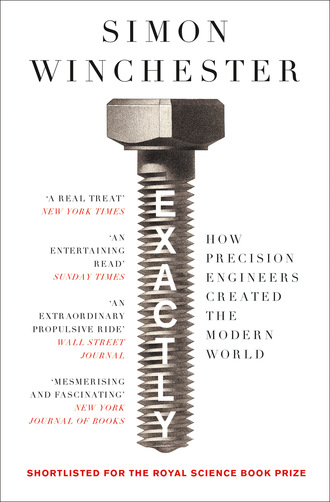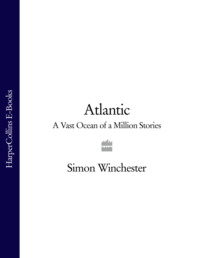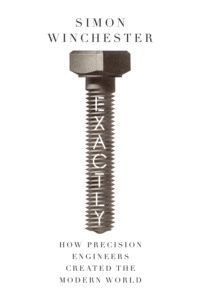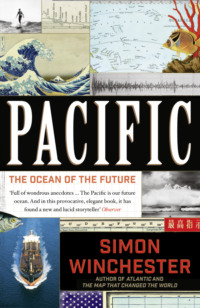
Полная версия
Exactly
Still, a case can also be made that “Iron-Mad Wilkinson,” as he was widely known, had predecessors who can lay near-equal claim to parenthood. One of them was a luckless clockmaker from Yorkshire named John Harrison, who worked just a few decades earlier to create devices that kept near-perfect time; the other, rather unexpectedly to those who suppose precision to be more or less a modern creation, was a nameless craftsman who worked in Ancient Greece some two thousand years before Harrison, and whose triumph of precise craftsmanship was discovered deep in the Mediterranean at the turn of the last century by a group of fishermen out diving for sponges.
The Greek team, diving in the warm waters south of the Peloponnese, close to the small island of Antikythera, found sponges in abundance, as they usually did. Yet this time they found something else: the spars and tumbled beams of a wrecked ship, most probably a Roman-era cargo vessel. Among all the broken wood, they came upon a diver’s dream: a massive trove of marvels of art and luxury, along with, more mysteriously, a telephone directory–size lump of corroded and calcified bronze and wood that was initially discounted and almost discarded as being of little archaeological significance.
Except that after sitting for two years in a drawer in Athens, overlooked and yet all the while patiently drying itself out, the sorry-looking lump fell apart. It sundered itself into three pieces, revealing within, and to the astonishment of all, a mess of more than thirty metallic and cleverly meshing gearwheels. One of these wheels had a diameter almost as wide as the object itself; others were no wider than a centimeter. All had hand-cut triangular teeth—the tiniest wheels had as few as 15; the enormous one had a then-inexplicable 223. It looked as though all the wheels had been cut from a single plate of bronze.
Astonishment at this discovery quickly turned to disbelief, to skepticism, to a kind of puzzled fearfulness among scientists who simply could not believe that even the most sophisticated of Hellenistic engineers had ever been capable of making such a thing. So, for almost half a century, this most intimidating machine—if that is what it was—was locked away again, secured and contained like a deadly pathogen. It was given a name, the Antikythera mechanism, for the island, halfway between Crete and the southern tendrils of mainland Greece, off which it was found. It was then quietly and casually all but erased from a Greek archaeological history that was much more comfortable dealing with the more customary fare of vases and jewelry, amphorae and coins, and statues of marble or the most lustrous bronze. A handful of slim books and pamphlets were published, declaring the device to be some kind of astrolabe or planetarium, but otherwise, there was a near-universal lack of interest in the find.
It was not until 1951 that Derek Price, a young British student of the history and social impact of science, won permission to take a closer look at the Antikythera mechanism, and for the next two decades he subjected the shattered relic, with a total of now more than eighty additionally found bits and pieces as well as the three main fragments, to blizzards of X-rays and wafts of gamma radiation, probing secrets that had been hidden for two thousand years. Eventually, Price decided the work was much more complex and important than a mere astrolabe—it was in fact more likely to be the once-beating heart of a mysterious computing device of unimagined mechanical complexity, one that had evidently been made in the second century BC and was clearly a work of staggering genius.
Price’s work in the 1950s was limited by his technology’s inability properly to peer inside the device. All this changed with the invention twenty years later of computed tomography scanning, or CT, which led in 2006, more than a century after the sponge seekers made their first find, to the publication in Nature of a profoundly more detailed and sophisticated analysis.
The world-scattered team of specialist researchers who produced the Nature article concluded that what the Greek divers had pulled to the surface were the remains of a miniaturized and neatly boxed mechanical device, an analog computer, essentially, with dials and pointers and rudimentary instructions for how to use it. It was a device that “calculated and displayed celestial information, particularly cycles such as the phases of the moon and a luni-solar calendar.” Moreover, minuscule inscribed lettering in Corinthian Greek chased into the machine’s brass work—a total of 3,400 letters, all millimeter-size, have been found thus far—suggested that the gearwheels, once fully engaged with one another with the turning of a crank on the side of the box, could also predict the movement of the five other planets then known to the Ancient Greeks.*
Enthusiasts, a small but fervent corps of devotees of this extraordinary little instrument, have since built working models of the mechanism, in wood and brass and, in one instance, with its bronze innards expanded and exploded as in a 3-D checkers game, between layers of transparent Perspex. It was the numbers of teeth on the various wheels that offered the first clues as to how they might have been employed by the machine’s makers. The fact that there were 223 teeth on the largest of the gearwheels, for example, provided a eureka moment for the investigators, who remembered that Babylonian astronomers, who were the most astonishingly able watchers of the skies, had calculated that lunar eclipses were usually separated by 223 full moons. Use of this particular wheel, then, would have enabled the user to predict the timing of eclipses of the moon (just as other wheels and combinations of wheels would have turned pointers on dials to display phases and planetary perturbations) and the dates, more trivially, of upcoming public sporting events, most notably the ancient Olympic Games.
Modern investigators have concluded that the device was very well made, “with some parts constructed to accuracies of a few tenths of a millimeter.” By that measure alone, it would seem that the Antikythera mechanism can lay claim to being a most precise instrument—and, crucially for this introduction to the story, maybe the first precision instrument ever made.
Except that there is an inherent flaw in this claim. The device, as model-tested by the legions of fascinated modern analysts, turns out to be woefully, shamefully, uselessly inaccurate. One of the pointers, which supposedly indicates the position of Mars, is on many occasions thirty-eight degrees out of true. Alexander Jones, the New York University antiquities professor who has perhaps written most extensively about the Antikythera mechanism, speaks of its sophistication as being that only “of a young and rapidly developing craft tradition,” and of “questionable design choices” by its makers, who, in summary, produced a device that was “a remarkable creation, but not a miracle of perfection.”
There is one additional puzzling aspect of the mechanism that still intrigues historians of science to this day: while it was filled to bursting with what is self-evidently a complicated assemblage of clockwork, none of its assemblers apparently ever thought of using it as a clock.
Hindsight permits us to be puzzled, of course, and persuades us to want to reach back to the Greeks and shake them a little for ignoring what to us seems obvious. For time was already being measured in Ancient Greece with the help of all manner of other devices, most popularly with sundials, dripping water, hourglasses (as in egg timers), oil lamps with time-graduated fuel holders, and slow-burning candles with time graduations on the stick. And though the Greeks possessed (as we now know from the existence of the mechanism) the wherewithal to harness clockwork gears and make them into timekeepers, they never did so. The penny never dropped. It never dropped for the Greeks or, subsequently, for the Arabs or, even beforehand, for the much more venerable civilizations of the East. It would take many more centuries for mechanical clocks to be invented anywhere, but once they were, they would have precision as their most essential component.
Though the eventual function of the mechanical clock, brought into being by a variety of claimants during the fourteenth century, was to display the hours and minutes of the passing days, it remains one of the eccentricities of the period (from our current viewpoint, that is) that time itself first played in these mechanisms a somewhat subordinate role. In their earliest medieval incarnations, clockwork clocks, through their employment of complex Antikythera-style gear trains and florid and beautifully crafted decorations and dials, displayed astronomical information at least as an equal to the presentation of time. It was almost as though the passage of celestial bodies across the heavens was considered more significant than the restless ticking of the passage of moments, of that one-way arrow of time that Newton so famously called “duration.”
There was a reason for this. Nature’s offerings of dawn, midday, and dusk already provided the temporal framework—the mundane business of when it was time to rise and work, when came the time to rest, to mop the brow and take a drink, and when the time to take nourishment and prepare for sleep. The more finicky details of time (a man-made matter, after all), of whether it was 6:15 a.m. or ten minutes to midnight, were necessarily of lesser importance. The behavior of the heavenly bodies was ordained by gods, and therefore was a matter of spiritual significance. As such, it was far worthier of human consideration than our numerical constructions of hours and minutes, and was thus more amply deserving of flamboyant mechanical display.
Eventually, though, the reputation and standing of the hours and minutes themselves did manage to rise through the ranks, did come to dominate the usage of the clockwork mechanisms that became known, generically, as timekeepers. The Ancients may have looked upward to the skies to gather what time it was, but once machinery began to perform the same task, a vast range of devices took over the duty, and has done so ever since.
Monasteries were the first to employ timekeepers, the monks having a need to awaken and observe in some detail the canonical hours, from Matins to Compline by way of Terce, None, and Vespers. And as various other professions and callings started to appear in society (shopkeepers, clerks, men of affairs bent on holding meetings, schoolteachers due to instruct to a rigid schedule, workers on shifts), the need for a more measured knowledge of numerical time pressed ever more firmly. Toilers in the fields could always see or hear the hour on the distant church clock, but city dwellers late for a meeting needed to know how many minutes remained until the “appointed hour” (a phrase that gained currency only in the sixteenth century, by which time public mechanical clocks were widely on display).
On land, it was the railways that most prolifically showed—one might say defined—the employment of time. The enormous station clock was more glanced at than any other feature of the building; the image of the conductor consulting his (Elgin, Hamilton, Ball, or Waltham) pocket watch remains iconic. The timetable became a biblically important volume in all libraries and some households; the concept of time zones and their application to cartography all stemmed from railways’ imprint of timekeeping on human society.
Yet, before the chronological influence of railways, there was one other profession that above all others truly needed the most precise timekeeping. It was that which had been developing fast since the European discovery of the Americas in the fifteenth century and the subsequent consolidation of trade routes to the Orient: the shipping industry.
Navigation across vast and trackless expanses of ocean was essential to maritime business. Getting lost at sea could be costly at best, fatal at worst. Also, because the exact determination of where a ship might be at any one moment was essential to the navigation of a route, and because one part of that determination depends, crucially, on knowing the exact time aboard the ship and, even more crucially, the exact time at some other stable reference point on the globe, maritime clockmakers were charged with making the most precise of clocks.*
And none was more sedulously dedicated to achieving this degree of exactitude than the Yorkshire carpenter and joiner who later became England’s, perhaps the world’s, most revered horologist: John Harrison, the man who most famously gave mariners a sure means of determining a vessel’s longitude. This he did by painstakingly constructing a family of extraordinarily precise clocks and watches, each accurate to just a few seconds in years, no matter how sea-punished its travels in the wheelhouse of a ship. An official Board of Longitude was set up in London in 1714, and a prize of twenty thousand pounds offered to anyone who could determine longitude with an accuracy of thirty miles. It was John Harrison who, eventually and after a lifetime of heroic work on five timekeeper designs, would claim the bulk of the prize.
Harrison’s legacy is much treasured. The curator of the Greenwich Royal Observatory, high on its all-seeing hill above the Maritime Museum to the east of London, comes in each dawn to wind the three great clocks that he and his staff are disposed simply to call “the Harrisons.” He stands on much ceremony to wind them, well aware of the immense historical importance invested in the three timepieces and their one unwound sibling. Each was a prototype of the modern marine chronometer, which, in allowing ships to fix their positions at sea with accuracy, has since saved countless sailors’ lives. (Before the existence of the marine chronometer, before ships’ masters had the ability to determine exactly where they were, vessels tended to collide with importunate frequency into islands and headlands that loomed up unexpectedly before their bows. Indeed, it was the catastrophic collision off the Cornish coast of Admiral Sir Cloudesley Shovell’s squadron of warships in 1707 [which drowned him and two thousand of his sailors] that compelled the British government to think seriously about the means of figuring out longitude—setting up a Board of Longitude and offering prize money—which led, ultimately, to the making of the small family of clocks that are wound each dawn at Greenwich.)
There were other reasons for the vast importance of the Harrisons. By allowing ships to know their positions and plot their voyages with efficiency, accuracy, and precision, these clocks and their successors enabled the making of untold trading fortunes. And though it may no longer be wholly respectable to say so, the fact that the Harrison clocks were British-invented and their successor clocks firstly British-made allowed Britain in the heyday of her empire to become for more than a century the undisputed ruler of all the world’s oceans and seas. Precise-running clockwork made for precise navigation; precise navigation made for maritime knowledge, control, and power.
And so the curator pulls on his white curatorial gloves and, using in each case a unique double set of brass keys, unlocks the tall glass-sided cabinets in which the great timekeepers stand. Each of the three is on near-permanent loan from Britain’s Ministry of Defence. The earliest made, finished in 1735 and known these days as H1, the curator can wind with a single strong downward pull on a chain made of brass links. The later pair, the midcentury H2 and H3, require simply a swift turn of a key.
The final device, the magnificent H4 “sea watch” with which Harrison eventually won his prize money, remains unwound and silent. Housed in a five-inch-diameter silver case that makes it look rather like an enlarged and biscuit-thick version of grandfather’s pocket watch, it requires lubrication and, if it runs, will become less precise with time as the oil thickens; it will lose rate, as horologists say. Moreover, if H4 were kept running, only its second hand would be seen to be moving, and so, as spectacle, it would be somewhat uninteresting—and as a trade-off for the inevitable wear and tear of the movement beneath, the sight of a moving second hand made no sense. So the decision of the observatory principals over the years has been to keep this one masterpiece in its quasi-virgin state, much like the unplayed Stradivarius violin at the Ashmolean Museum in Oxford,* as a seldom touched testament to its maker’s art.
And what sublime pieces of mechanical art John Harrison made! By the time he decided to throw his hat in the ring for the longitude prize, he had already constructed a number of fine and highly accurate timekeepers—most of them pendulum clocks for use on land, many of them long-case clocks, each one more refined than the last. Harrison’s skills lay in the imaginative improvement of his timekeepers, rather than in the decorative embellishment that many of his eighteenth-century contemporaries were known for.
He was fascinated, for instance, with the problem of friction, and in a radical departure from the norm, he made all his early clocks with wooden gearwheels, which needed none of the lubricant oils of the day, oils that became notoriously more viscous with age and had the trying effect of slowing down most clockwork movements. To solve this problem, he made all his gear trains first of boxwood and then of the dense, nonfloating Caribbean hardwood Lignum vitae, combined in both cases with pivots made of brass. He also designed an extraordinary escapement mechanism, the ticking heart of the clock, that had no sliding parts (and hence no friction, either) and that is still known as a grasshopper escapement because one of the components jumps out of engagement with the escape wheel, just as a grasshopper jumps suddenly out of the grass.
A portable precision clock designed for use on a rolling ship cannot easily use a long gravity-driven pendulum, however, and the first three timepieces Harrison designed for the contest were powered by systems of weights that look very different from the heavy plumb bobs that hang in a conventional long-case clock. They are instead brass bar balances that look like a pair of dumbbells, both placed vertically on the outer edges of the mechanism and its wheel trains, and connected at their tops and bottoms by pairs of springs, which provide the mechanism with a form of artificial gravity, as Harrison wrote. These springs allow the two balance beams to swing back and forth, back and forth, nodding toward and away from each other endlessly (provided that the white-gloved curator, successor on land to the ship’s master at sea, winds the mechanism daily) as the clock ticks on.
H1, H2, and H3, each clock a subtle improvement upon its predecessor, each the work of years of patient experimentation—H3 took Harrison fully nineteen years to build—employ essentially the same bar balance principle, and when they are working, they are machines of an astonishing, hypnotic beauty and seemingly bewildering complexity. Many of the improvements that this former carpenter and viola player, bell tuner and choirmaster—for eighteenth-century polymaths were polymaths indeed—included in each have gone on to become essential components of modern precision machinery: Harrison created the encaged roller bearing, for example, which became the predecessor to the ball bearing and led to the founding of huge modern corporations such as Timken and SKF. And the bimetallic strip, invented solely by Harrison in an attempt to compensate for changes in temperature in his H3 timekeeper, is still employed in scores of mundane essentials: in thermostats, toasters, electric kettles, and their like.
As it happened, none of these three fantastical contraptions, however beautiful in appearance and revolutionary in design they may have been, turned out to be a success. Each was taken to a ship and used by the crew as timekeeper, and each time, though the timekeeper offered an improvement on surmising the ships’ various positions, the accuracy of the vessel’s clock-derived longitude was wildly at variance from what the Board of Longitude demanded—and so no prize was awarded. Harrison’s genius and determination were recognized, though, and hefty grants continued to come his way in the hope that he would, in time, make a horological breakthrough. And this he did, at last, when between the four years from 1755 until 1759 he made not another clock, but a watch, a watch that has been known, since it was cleaned and restored in the 1930s, simply as H4.*
The watch was a technical triumph in every sense. After thirty-one years of near-obsessive work, Harrison managed to squeeze almost all the improvements he had engineered in his large pendulum clocks into this single five-inch silver case, and add some others, to make certain that his timekeeper was as close to chronological infallibility as was humanly possible.
In place of the oscillating beam balances that made the magic madness of his large clocks so spectacular to see, he substituted a temperature-controlled spiral mainspring, together with a fast-beating balance wheel that spun back and forth at the hitherto unprecedented rate of some eighteen thousand times an hour. He also had an automatic remontoir, so-called, which rewound the mainspring eight times a minute, keeping the tension constant, the beats unvarying. There was a downside, though: this watch needed oiling, and so, in an effort to reduce friction and keep the needed application of oil to a minimum, Harrison introduced, where possible, bearings made of diamond, one of the early instances of a jeweled escapement.
It remains a mystery just how, without the use of precision machine tools—the development of which will be central to the story that follows—Harrison was able to accomplish all this. Certainly, all those who have made copies of H4 and its successor, K1 (which was used on all Captain James Cook’s voyages), have had to use machine tools to fashion the more delicate parts of the watches: the notion that such work could possibly be done by the hand of a sixty-six-year-old John Harrison still beggars belief.
Once his task was completed, he handed the finished watch over to the Admiralty for its crucial test. The instrument (in the care of Harrison’s son William, who acted as its chaperone) was taken aboard the HMS Deptford, a fifty-gun fourth-rate ship of the line, and sent out on a five-thousand-mile voyage from Portsmouth to Jamaica.* Careful observation at the end of the trip showed the watch to have accumulated a timekeeping error of only 5.1 seconds, well within the limits of the longitude prize. Over the entire 147 days of a voyage that involved a complex and unsettling stormy return journey (in which William Harrison had to swaddle the timekeeper in blankets), the watch error was just 1 minute 54.5 seconds, a level of accuracy never imagined for a seaborne timekeeping instrument.
And while it would be agreeable to report that John Harrison then won the prize for his marvelous creation, much has been made of the fact that he did not. The Board of Longitude prevaricated for years, the Astronomer Royal of the day declaring that a much better way of determining longitude, known as the lunar distance method, was being perfected, and that there was therefore no need for sea clocks to be made. Poor John Harrison, therefore, had to visit King George III (a great admirer, as it happens) to ask him to intercede on his behalf.
A series of humiliations followed. H4 was forced to be tested once again, and recorded an error of 39.2 seconds over a forty-seven-day voyage—once again, well within the limits set by the Board of Longitude. Harrison then had to dismantle the watch in front of a panel of observers and hand his precious instrument to the Royal Observatory for a ten-month running trial to check (once again, but this time on a stable site) its accuracy. It was torturous and vexing for the now-elderly Harrison, who at seventy-nine was becoming increasingly and understandably embittered by the whole procedure.
Finally, and thanks in large part to King George’s intervention, Harrison did get almost all his money. The popular memory of him, though, is of a genius hard done by, and his great clocks and the two sea watches, H4 and K1, remain the most potent memorials, three of them beating out the time steadily and ceaselessly as a reminder of how their maker, with his devotion to precision and accuracy in his craft work, helped so profoundly to change the world.





